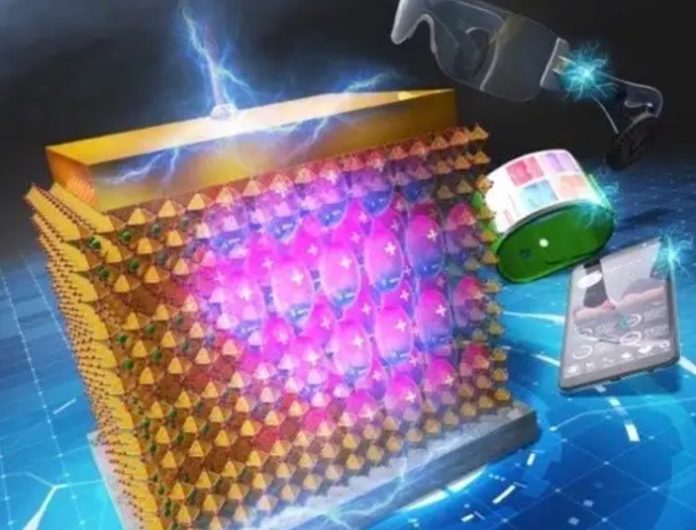
Ever wondered how the batteries in your phone, car, or other gadgets could get a supercharge?
A research team led by Professor Minoru Osada at Nagoya University in Japan, in collaboration with the National Institute for Materials Science (NIMS), has found a way.
They’ve developed a new kind of device that uses ultra-thin layers called nanosheets, which can store more energy than anything we’ve seen before.
Their findings have been published in the scientific journal Nano Letters.
As we’re relying more on renewable energy sources and electric cars, there’s an urgent need to create better ways to store and use energy.
Unfortunately, our current batteries, such as the lithium-ion batteries used in phones and laptops, have some drawbacks. They take a long time to recharge, don’t last forever, and can even catch fire.
A possible solution could be using something called dielectric energy storage capacitors.
Imagine a sandwich with two metal slices (the electrodes) and a slice of cheese in the middle (the dielectric film).
This cheese layer can store energy through a process called polarization. When we apply an electric field (like plugging in to charge), charges in the cheese layer shift and align, storing energy.
“Dielectric capacitors come with several benefits such as quick charging times of just a few seconds, longer lifespan, and high power density,” said Professor Osada.
But there’s one problem: the amount of energy they can store is far from sufficient for our growing needs.
Since the energy stored in these capacitors depends on the polarization, one solution is to apply a very strong electric field to a material with a high dielectric constant. But we’re limited by how much electric field existing materials can handle without breaking down.
The Japanese research group decided to try a new approach.
They used layers of nanosheets made of calcium, sodium, niobium, and oxygen arranged in a crystal structure called perovskite. This structure is famous for its excellent dielectric properties, including high polarization.
Professor Osada explains, “We found that by using these materials, we can apply a high electric field to dielectric materials and convert it into stored energy without any loss. This leads to the highest energy density we’ve ever achieved.”
This new nanosheet technology created dielectric capacitors that stored way more energy while still producing high output. Plus, these capacitors were stable even at temperatures up to 300°C and over repeated cycles of use.
Excitingly, this breakthrough gives us a roadmap for creating even better capacitors in the future. According to Professor Osada, the new technology could be used in super quick charging devices that can handle high temperatures and last a long time.
He adds, “Dielectric capacitors can quickly release stored energy, which makes them great for applications where a powerful burst of energy is needed in a short time.”
These could include high-speed electric cars, particle accelerators, and high-powered microwave devices. So, in the not-too-distant future, charging your phone or car might just take a few seconds!
Follow us on Twitter for more articles about this topic.



